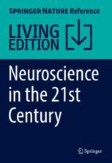Search
Search Results
-
Sensorimotor Incoordination in Musicians’ Dystonia
To acquire and maintain outstanding sensorimotor skills for playing musical instruments inevitably requires extensive training from childhood....
-
Dystonia in Childhood: How Insights from Paediatric Research Enrich the Network Theory of Dystonia
Dystonia is now widely accepted as a network disorder, with multiple brain regions and their interconnections playing a potential role in the...
-
Dysfunctional Networks in Functional Dystonia
Functional dystonia, the second most common functional movement disorder, is characterized by acute or subacute onset of fixed limb, truncal, or...
-
Brain Connectivity in Dystonia: Evidence from Magnetoencephalography
Magnetoencephalography (MEG) detects synchronized activity within a neuronal network by measuring the magnetic field changes generated by...
-
Embouchure Dystonia as a Network Disease
While the pathophysiology of embouchure dystonia, a sub-entity of musician’s dystonia, is still not fully understood, recent research has shown that...
-
Neuromodulation in Dystonia – Harnessing the Network
Adult-onset isolated focal dystonia (AOIFD) is a network disorder characterised by abnormalities of sensory processing and motor control. These...
-
Basal Ganglia: Dystonia
Dystonia is a relatively common movement disorder and characterized by sustained or repetitive involuntary muscle contractions and abnormal postures....
-
Electrophysiological insights into deep brain stimulation of the network disorder dystonia
Deep brain stimulation (DBS), a treatment for modulating the abnormal central neuronal circuitry, has become the standard of care nowadays and is...

-
Basal Ganglia: Dystonia
Dystonia is a relatively common movement disorder and characterized by sustained or repetitive involuntary muscle contractions and abnormal postures....
-
Basic and Translational Applications of the Network Theory for Dystonia
A recently proposed novel scheme of dystonia suggests that it is a disorder of neural network. Impairment in any of the “nodes” of the network may...

-
Clinical Implications of Dystonia as a Neural Network Disorder
Isolated dystonia is a neurological disorder of diverse etiology, multifactorial pathophysiology, and wide spectrum of clinical presentations. We...
-
Applications of Transcranial Magnetic Stimulation for Understanding and Treating Dystonia
Transcranial magnetic stimulation (TMS)-based studies have led to an advanced understanding of the pathophysiology of dystonia. This narrative review...
-
A Systematic Review of Cognition in Cervical Dystonia
Growing evidence points to a spectrum of non-motor symptoms, including cognitive difficulties that have a greater impact on functional outcomes and...

-
X-linked dystonia parkinsonism: epidemiology, genetics, clinical features, diagnosis, and treatment
X-linked dystonia parkinsonism (XDP) is a rare X-linked recessive degenerative movement disorder that only affects Filipino descent, predominantly...

-
Focal Dystonia and the Stress Network: The Role of Stress Vulnerability and Adverse Childhood Experiences in the Development of Musician’s Dystonia
Musician’s dystonia is often described as a neurological disorder, resulting from reduced inhibition in the basal ganglia and the cerebellum and...
-
Methylation of the serotonin reuptake transporter gene and non-motor symptoms in dystonia patients
BackgroundDystonia is a rare movement disorder, in which patients suffer from involuntary twisting movements or abnormal posturing. Next to these...

-
Task-specific dystonia in hairdressers: a questionnaire survey and review of the literature
Hairdresser dystonia is one of the occupational dystonias and task-specific movement disorders occurring as a result of long-term repetitive cutting...

-
Biallelic SHQ1 variants in early infantile hypotonia and paroxysmal dystonia as the leading manifestation
Biallelic SHQ1 variant-related neurodevelopmental disorder is extremely rare. To date, only six affected individuals, from four families, have been...

-
Treatment of Involuntary Movements (Dystonia, Tremor, Tic)
Botulinum toxins, after injection into the muscle, block the release of acetylcholine from the neuromuscular junction. Acetylcholine is a chemical...
-
A Japanese family with dystonia due to a pathogenic variant in SGCE
Dystonia (DYT) is a heterogeneous neurological disorder, and there are many types of DYT depending on the responsible genes. DYT11 is an autosomal...

